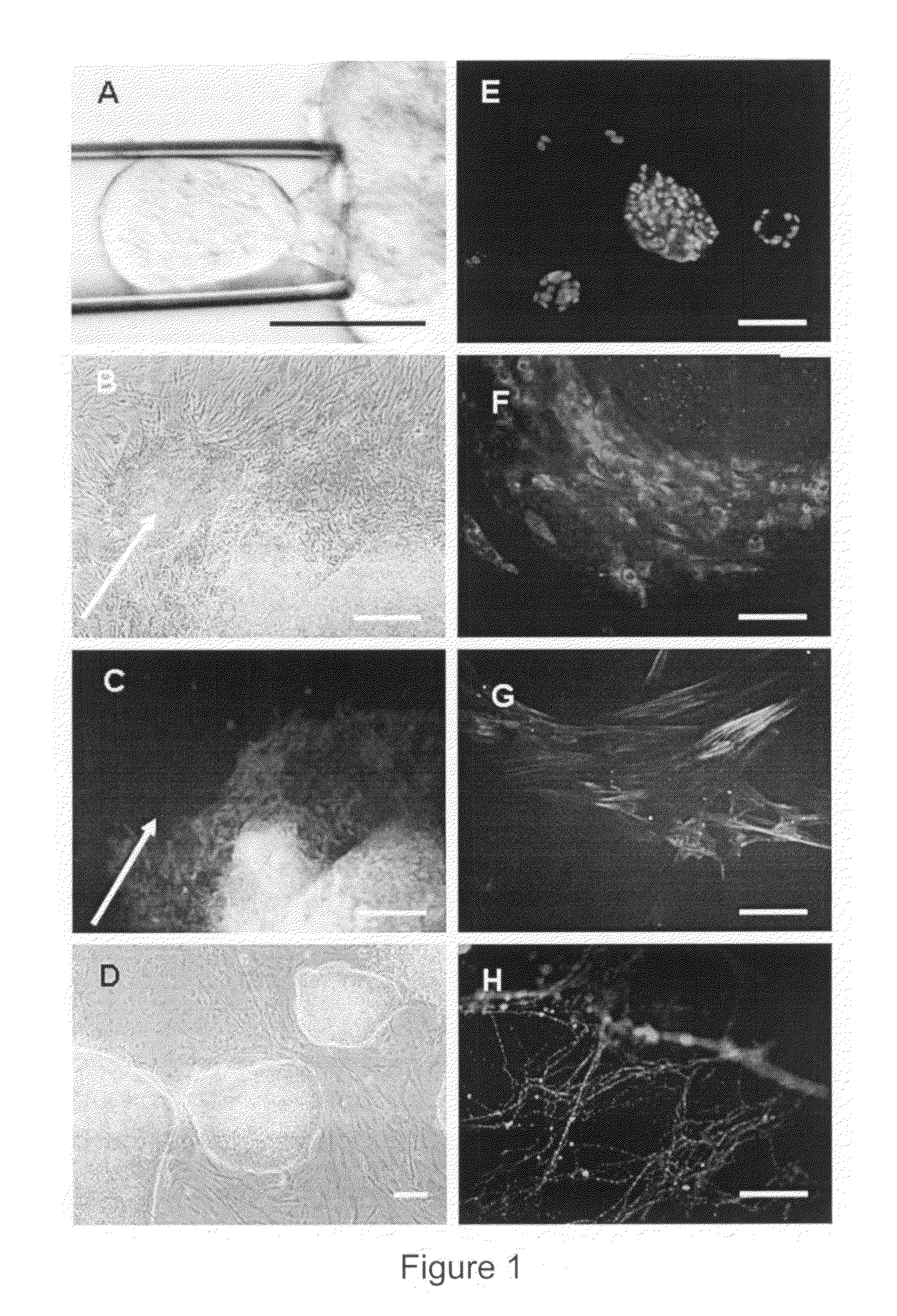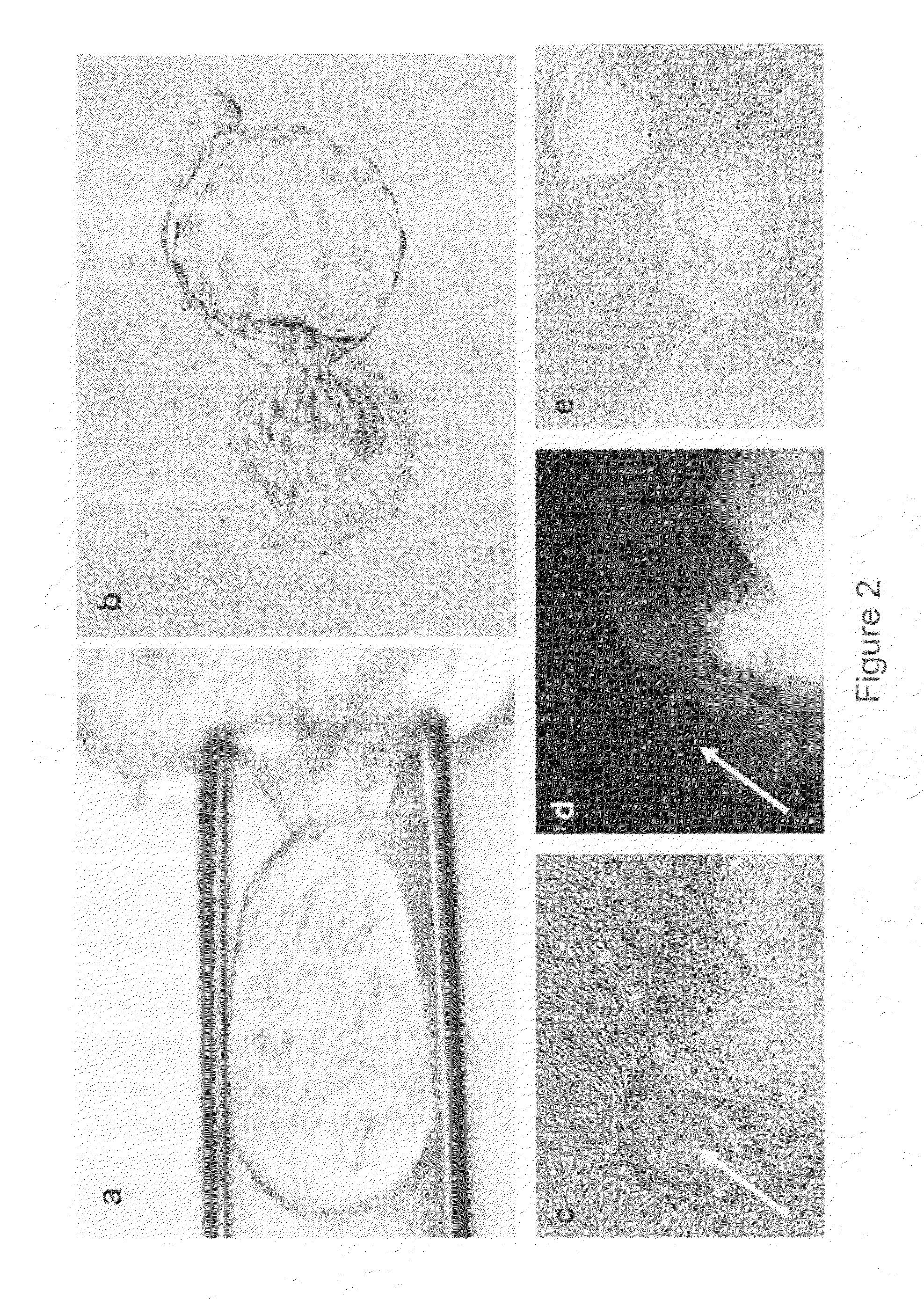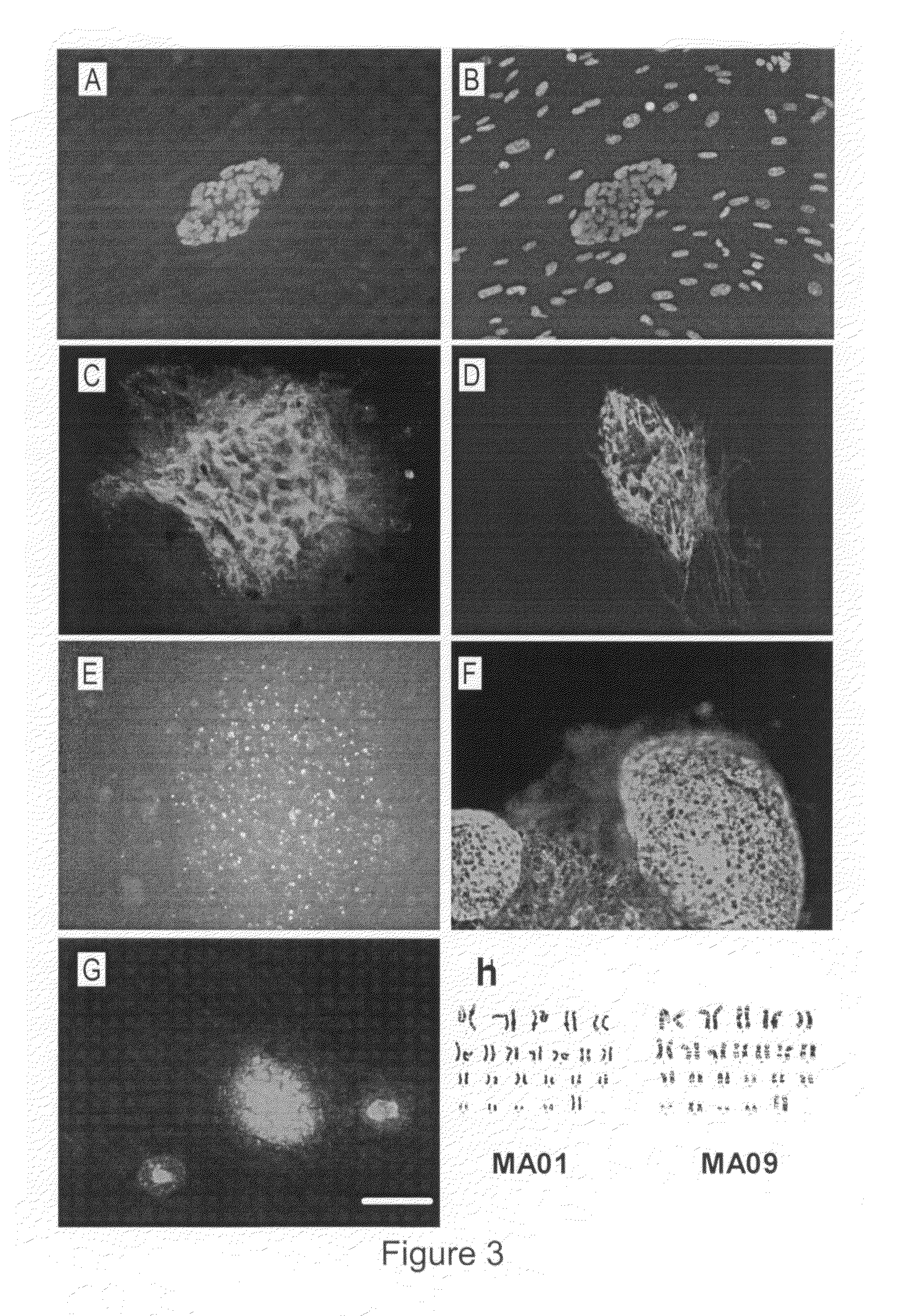Derivation of embryonic stem cells and embryo-derived cells
a technology of embryonic stem cells and embryos, which is applied in the field of embryonic stem cells and embryo-derived cells, can solve the problems of es cell-stage blastocyst embryos that cannot be cryopreserved, frozen for later use, or allowed to develop further
- Summary
- Abstract
- Description
- Claims
- Application Information
AI Technical Summary
Benefits of technology
Problems solved by technology
Method used
Image
Examples
example 1
Generation of Human ES Cell Lines
Unused embryos produced by in-vitro fertilization for clinical purposes were obtained. Six of these embryos were Grade I or II (symmetrical and even cell division with little or no cytoplasmic fragmentation), whereas the remaining ten embryos were Grade III (variable fragmentation) using standard scoring system (Veeck, L. L. et al., An Atlas of Human Gametes and Conceptuses, Parthenon, New York, N.Y., 1999). Embryos with blastomeres of unequal size and moderate-to-severe fragmentation (Grades IV and V) were excluded from this study. Pronuclear and multi-cell stage human embryos were thawed and cultured until the 8-10 cell stage at 37 C in 20 μl drops of Quinn's cleavage medium (Cooper Surgical Inc., Cat # ART1526) under paraffin oil (Cooper Surgical Inc. Cat # 4008) in a high humidified incubator with 5.5% CO2 / 5% O2 / 89.5% N2.
The zona pellucida was disrupted using either Acidic Tyroides solution or multiple Piezo-pulses and individual blastomeres were...
example 2
Differentiation of Human ES Cells
The ability of the human ES cells to differentiate into different germ layers was analyzed both in vitro and in teratomas using techniques known in the art.
Briefly, for the in vitro experiments, the human ES cells were separated by treating with either collagenase or trypsin and then cultured in cell culture dishes without feeder cells in embryoid body (EB) medium. Approximately one week later, the ES cells formed embryoid bodies (EB). The EBs were then fixed in 4% formaldehyde, washed in PBS, embedded in paraffin, sectioned and analyzed for the presence of derivatives from endoderm, mesoderm and ectoderm using tissue specific antibodies (α-feto protein for primitive endoderm, muscle actin for mesoderm, and β III tubulin for ectoderm) (FIG. 4).
The single blastomere-derived human ES cell could also be differentiated in vitro into cells of specific therapeutic interest, including endothelial cells which after replating on Matrigel, formed typical capil...
example 3
Production of ED Cells
As can be seen in Table 1 above, the production of embryo-derived cells from isolated blastomeres occurs more often than the production of ES cell lines. Of 53 isolated blastomeres that divided, 19 cultures yielded directly-differentiated cell types and only 2 yielded ES cell lines. FIG. 6 shows the variety of differentiated cell morphologies observed by direct differentiation.
PUM
| Property | Measurement | Unit |
|---|---|---|
| osmolarity | aaaaa | aaaaa |
| volume | aaaaa | aaaaa |
| osmolarity | aaaaa | aaaaa |
Abstract
Description
Claims
Application Information
 Login to View More
Login to View More - R&D
- Intellectual Property
- Life Sciences
- Materials
- Tech Scout
- Unparalleled Data Quality
- Higher Quality Content
- 60% Fewer Hallucinations
Browse by: Latest US Patents, China's latest patents, Technical Efficacy Thesaurus, Application Domain, Technology Topic, Popular Technical Reports.
© 2025 PatSnap. All rights reserved.Legal|Privacy policy|Modern Slavery Act Transparency Statement|Sitemap|About US| Contact US: help@patsnap.com



